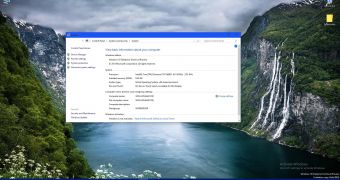Microsoft confirmed at the January 21 event that Windows 10 would be offered free of charge for one year, and while this is indeed pretty good news for everyone, this announcement is still handled with some level of skepticism by some users.
And it's easy to see why. Microsoft didn't provide too many details about its offer, and the only thing it mentioned during the event was that Windows 10 would be free for one year.
Here's what Terry Myerson said during the Windows 10 event in Redmond:
“For the first year after Windows 10 is available we will be making available a free upgrade to Windows 10 to all devices running Windows 8.1. And last but not least, for the first year after Windows 10 is available we will be making available a free upgrade to all of our customers still running Windows 7.”
Right now, many users believe that Windows 10 will actually be free for just one year, and after this period ends, they might have to pay for a license.
Others believe that Windows 10 will ship as some sort of trial version that can be fully tested for 12 months and which would suddenly stop working after this first year.
Obviously, this isn't the case.
“Free during the whole supported lifetime of the device”
As Rod Trent writes, Terry Myerson also said something that was supposed to put things straight and reduce the confusion that his previous announcement might have generated.
Basically, the one-time free upgrade offer would allow you to use Windows 10 on your computer during what Microsoft calls “the supported lifetime of the device.”
And yet, the company didn't provide any other details on what this actually means but promised to share more information at a later time.
Gabe Aul, head of the Windows Insider Program, said on Twitter pretty much the same thing, reiterating Microsoft's intention to keep Windows 10 completely free of charge during the supported lifetime of the device.
Some say that this offer could only be valid for devices manufactured by Microsoft, such as tablets and PCs, where the company can control the supported lifetime, while others believe that the company could work together with OEMs to keep Windows 10 updated on their computers as long as they support the hardware.
Obviously, there are many things that need to be clarified here, so we've reached out to Microsoft for a word on this and will update the article when we get more info.

 14 DAY TRIAL //
14 DAY TRIAL //